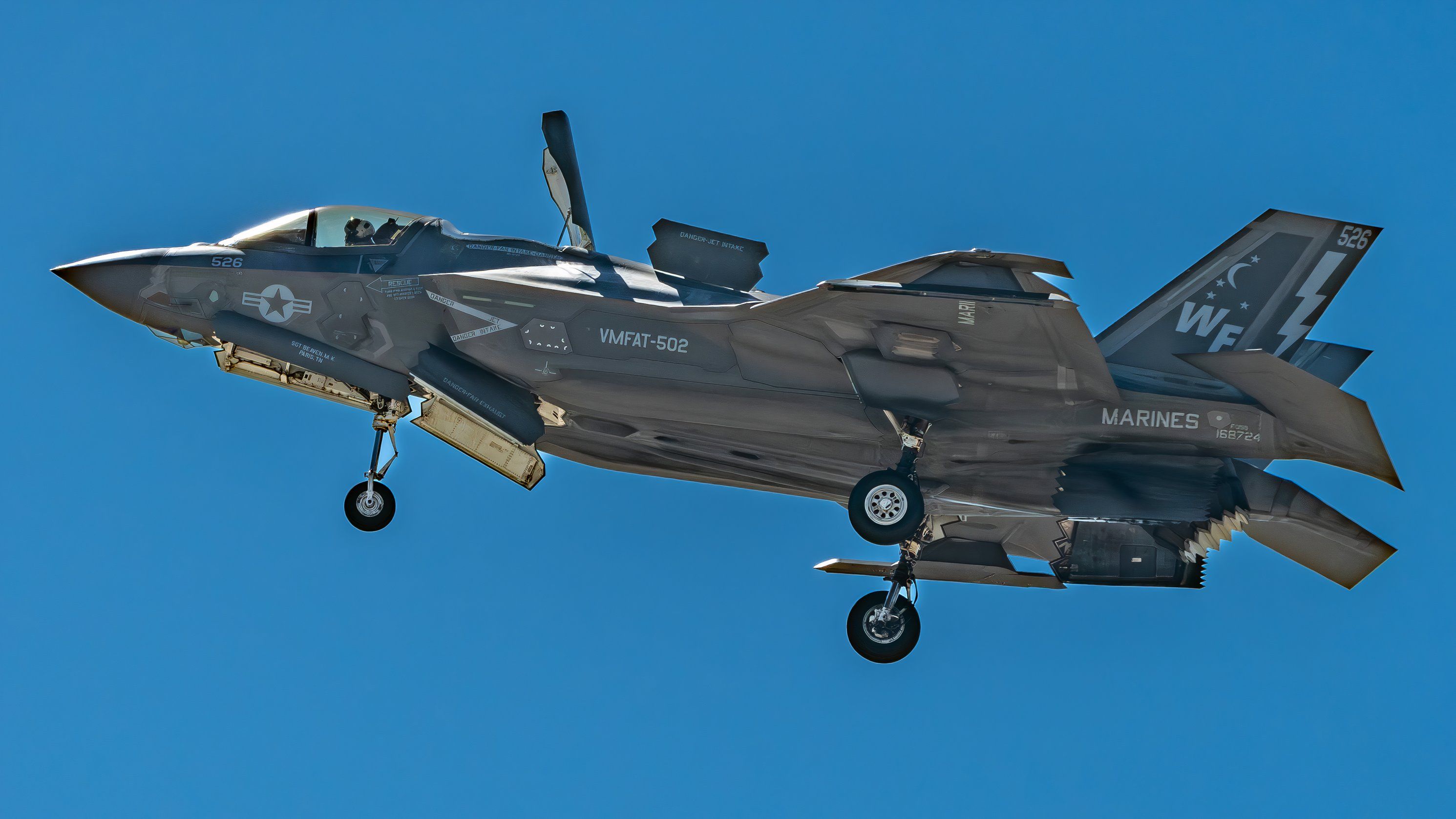Pilot Ejects As F-35 Crashes During Take-Off At Albuquerque International Airport
A recent F-35B ejection raises inquiries about the F-35B. A Lockheed Martin F-35B Lightning II (aka Panther) stealth jump jet crashed during a short take-off at Albuquerque International Airport on May 28. The pilot, a Defense Contract Management Agency pilot, was uninjured and is now medically stable. The incident did not result in any loss of life. The F35B’s pilot is partially recovering from injuries due to the accident's use of the Martin-Baker US16E seat. It is unclear whether the ejection system was pilot-activated or seat-activated. The aircraft's unique capabilities include multiple sensors to detect potential threats and targets, and substantial firepower. Lockheed Martin has issued statements on the incident and the upcoming replacement of the TR-3.

Опубликовано : год назад от Joe Kunzler в Travel
In an incident that thankfully did not have loss of life, a F-35B Lightning II stealth jump jet equipped with the important and delayed Technology Refresh 2 upgrade. The F-35B was flown by a Defense Contract Management Agency pilot who is thankfully medically stable as of late May 29.
On May 28, a Lockheed Martin F-35B Lightning II (aka Panther) made a stop at Albuquerque International Airport’s Kirtland Air Force Base for refueling. However, as per the below air traffic control audio, the pilot wanted to do a short take-off from the airport:
Sadly, the short take-off attempt using the F-35B’s lift fan did not succeed. One can watch the incident thanks to The Aviationist and Alex McCready:
All reports are that the pilot is on a path to recovery, partially thanks to the F-35B’s Martin-Baker US16E Seat:
According to Martin-Baker, the US16Es fitted to the F-35Bs have an auto ejection system. As of late May 29, it was unconfirmed whether the ejection system was pilot-activated or seat-activated. The ejection seat is based on the Mk16 range of Martin-Baker ejection seats used on the T-6 Texan II, Eurofighter Typhoon, NASA T-38N and USAF T-38.
The F-35B variant of the F-35 is the Short Take-Off and Vertical Landing (STOVL) variant. As such, the F-35B is intended to take off using a lift fan to shorten the distance and land vertically from small aircraft carriers and short airfields. Additionally, the F-35B in the words of Lockheed Martin’s product card is,
Hence the combination of stealth technology and unique propulsion technology on the F-35B. One can read more about the F-35 from the product cards below:
Additionally, one can read the Simple Flying guide below into the F-35B’s unique flying capabilities:
The F-35B is not just a stealth STOVL supersonic aircraft; the F-35B is also a sensor, sharer, and shooter, as the US Marine Corps would say. Why? The F-35B has multiple sensors to detect potential threats and targets, the F-35B can share its findings with other allied aircraft and the F-35B carries substantial firepower.
Lockheed Martin statements on the incident and TR-3
Additionally, Lockheed Martin issued the following statement on the incident,
One should note that the F-35 is a continuously improving product. For instance, the TR-2 is about to be supplanted by TR-3. According to a Lockheed Martin spokeswoman,
As previously covered by Simple Flying, some of the issues around the TR-3 are delaying production. Finally, below is the Lockheed Martin May 1 update on the F-35 program overall for your reference:
We here at Simple Flying sincerely wish for the full recovery and return to flight of the pilot involved in this incident.
What are your concerns and thoughts for the F-35? Please share with civility in the comments.
